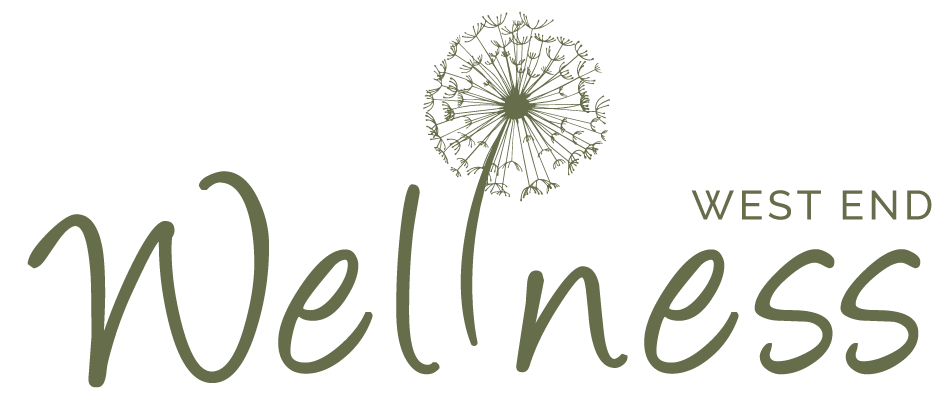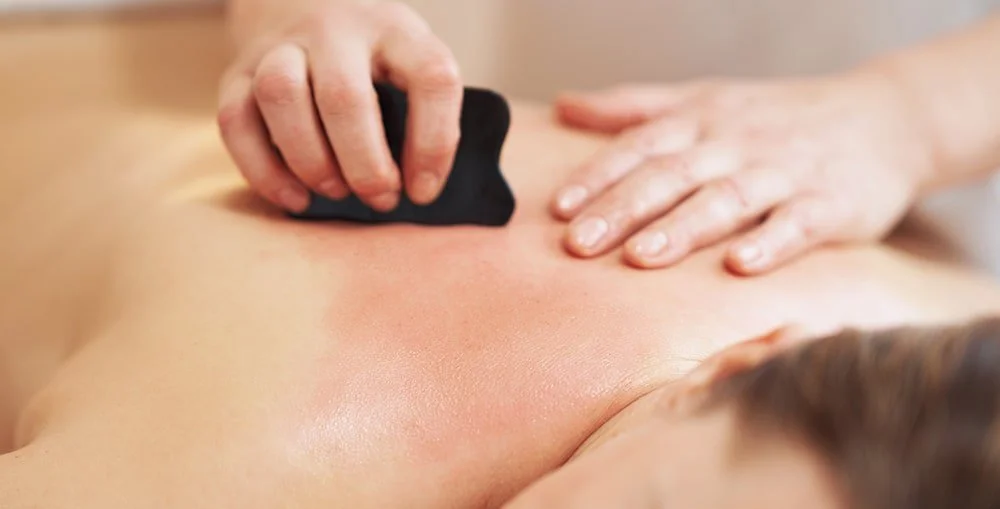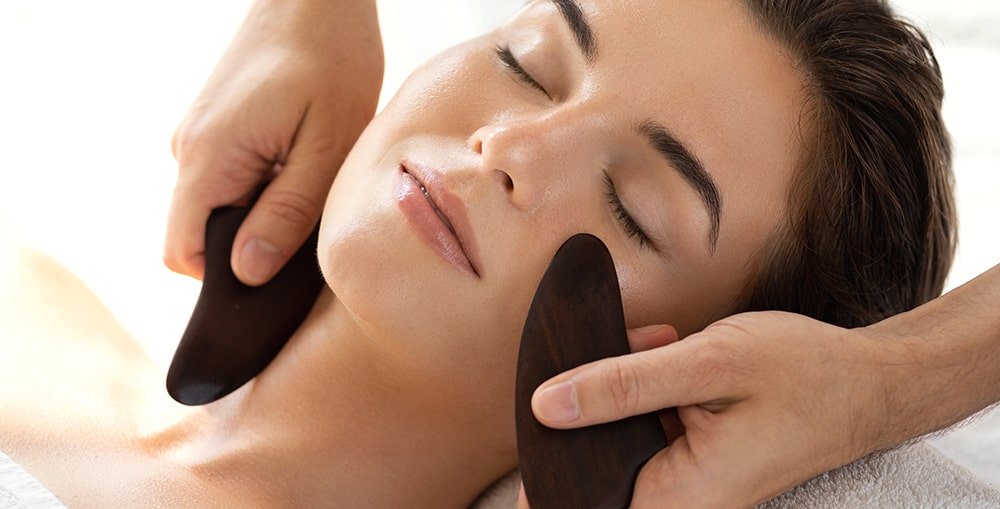Gua Sha Tools: Ancient Wisdom for Modern Wellness
Table of Contents Show
Quick Summary
Discover the ancient healing art of Gua Sha, a technique that's revolutionizing modern wellness routines. From facial rejuvenation to muscle tension relief, Gua Sha offers a holistic approach to health. Learn how this simple scraping technique can boost circulation, reduce inflammation, and enhance your overall well-being.
Whether you're a skincare enthusiast or seeking natural pain relief, Gua Sha might be your key to balanced health. Explore the benefits, techniques, and safety tips in our comprehensive guide.
In the bustling world of wellness trends, an ancient practice has emerged as a popular tool for those seeking natural ways to enhance their health and beauty.
Gua sha, a technique rooted in Traditional Chinese Medicine (TCM), has captured the attention of health enthusiasts and skincare aficionados alike.
But what exactly is gua sha, and why has it gained such prominence in recent years?
Gua sha is a healing method that gently scrapes the skin with a smooth-edged tool.
This practice, which translates to "scraping sand" in Chinese, has been used for centuries to promote circulation, relieve muscle tension, and support overall well-being.
Today, gua sha has found its way into modern wellness routines, particularly in facial treatments aimed at promoting a healthy, glowing complexion.
At West End Wellness, we recognize the value of integrating time-honoured practices like gua sha with contemporary approaches to health and beauty.
In this article, we'll explore the essence of gua sha, its potential benefits, and how you can incorporate this ancient healing technique into your wellness regimen.
Whether you're curious about its origins, interested in its applications, or considering trying it for yourself, join us as we uncover the world of gua sha and its place in modern self-care.
Understanding the Basics of Gua Sha
Gua sha is more than just a trendy beauty treatment; it's a practice deeply rooted in Traditional Chinese Medicine (TCM). At its core, gua sha is based on the belief that stagnation or blocked qi (energy) in the body leads to pain, tension, and illness.
By applying pressure and scraping the skin, practitioners aim to stimulate blood flow and promote healing.
In TCM, gua sha is traditionally used to treat various ailments, from chronic pain to respiratory issues. The practice is guided by the concept of meridians – energy pathways in the body that connect different organs and systems.
By working along these meridians, gua sha is thought to restore balance and promote overall wellness.
Modern interpretations of gua sha, particularly in the beauty industry, focus on its potential to improve skin health and facial contours.
However, the underlying principle remains the same: enhancing circulation and energy flow to support the body's natural healing processes.
The Gua Sha Technique
The gua sha technique involves several key elements:
Tools: Traditionally, practitioners used coins, animal bones, or horns. Today, smooth-edged tools made from materials like jade, rose quartz, or stainless steel are common. The shape and size of the tool can vary depending on the area being treated.
Preparation: Before treatment, the skin is typically lubricated with oil to allow the tool to glide smoothly. This helps prevent excessive friction and discomfort.
Scraping Motion: The practitioner applies firm pressure and strokes the tool along the skin in a downward or outward direction. On the body, these strokes are often longer and firmer, while facial gua sha uses gentler, shorter strokes.
Treatment Areas: Gua sha can be performed on various parts of the body, including the back, neck, arms, and legs. Facial gua sha focuses on areas like the cheeks, jawline, and forehead.
Duration: A typical session can last anywhere from 5 to 30 minutes, depending on the area being treated and the specific goals of the treatment.
Gua sha should not be painful when performed correctly, though some redness or mild bruising can occur, especially in body treatments. This is considered normal and typically subsides within a few days.
It's important to note that while gua sha can be done at home, receiving treatment from a trained practitioner, like those at West End Wellness, ensures proper technique and maximizes potential benefits.
Professional treatments can also be tailored to your specific health needs and concerns.
Potential Benefits of Gua Sha
While Gua Sha has been used for centuries in traditional medicine, modern research is beginning to uncover the scientific basis for its reported benefits. A pilot study published in Explore has shed light on some of the physiological effects of this ancient practice.
Let's explore some of the potential benefits of Gua Sha:
-
The study found that Gua Sha significantly increases microcirculation in the treated area.
Specifically, it caused a fourfold increase in microcirculation during the first 7.5 minutes after treatment, with elevated levels persisting for at least 25 minutes. This improved blood flow may contribute to various health benefits, including:Enhanced nutrient delivery to tissues
Improved removal of metabolic waste
Faster healing of minor injuries
-
One of the most notable findings of the study was the immediate decrease in myalgia (muscle pain) reported by all participants. Interestingly, this pain relief was experienced not only at the treated site but also in related distal areas and, in some cases, other distal sites.
This suggests that Gua Sha may have both local and systemic pain-relieving effects. -
While not directly measured in the study, the increased microcirculation observed could potentially help reduce inflammation.
Better blood flow can help remove inflammatory substances and bring in fresh nutrients and immune cells to promote healing. -
Although not a focus of the scientific study, many people report feeling more relaxed after Gua Sha treatments. This could be due to the physical act of massage-like strokes and the release of tension in treated areas.
-
When applied to the face with gentler techniques, Gua Sha may help improve skin tone and reduce the appearance of fine lines. While these cosmetic benefits weren't addressed in the study, they align with the observed increase in microcirculation.
-
The study noted that some degree of pain relief persisted until the follow-up visit, suggesting that the benefits of Gua Sha may extend beyond the immediate treatment period.
It's important to note that while these findings are promising, more research is needed to understand the mechanisms behind Gua Sha's effects fully and to explore its potential in treating various conditions.
The study also found that women showed significantly higher response rates than men, indicating that individual factors may influence the effectiveness of the treatment.
At West End Wellness, we incorporate Gua Sha into our holistic approach to health and wellness, tailoring treatments to each individual's needs and responses.
Whether you're seeking relief from muscle tension, looking to improve your skin's appearance, or simply want to experience this time-honoured technique, our trained practitioners can guide you through a safe and beneficial Gua Sha session.
Learn about facial acupuncture and see why this holistic approach can be better than Botox.
Gua Sha for Different Body Areas
While Gua Sha is often associated with facial treatments, its applications extend to various body parts. Let's explore how this technique can be beneficial for different areas:
Facial Gua Sha: Facial Gua Sha has gained popularity in recent years, particularly in the beauty and skincare industry. A study on Gua Sha, Jade Rollers, and Facial Massage explored their potential benefits in dermatology. While more research is needed, these techniques are believed to improve blood circulation, reduce puffiness, and potentially decrease the appearance of fine lines.
Neck and Shoulders: Gua Sha can be particularly effective in addressing tension in the neck and shoulder area. The technique may help to relieve muscle knots and improve the range of motion in these often-stressed areas.
Back and Spine: Applying Gua Sha to the back can potentially help with various musculoskeletal issues. The systematic review on manual lymphatic drainage for musculoskeletal injuries suggests that techniques like Gua Sha might contribute to reducing edema and improving overall clinical presentation in such conditions.
Arms and Legs: Gua Sha can potentially be applied to the limbs to improve circulation and reduce muscle tension. This can be particularly beneficial for athletes or individuals recovering from physical exertion.
Chest and Breast Area: While Gua Sha itself isn't typically used directly on the breast tissue, similar manual techniques have shown promise in managing lymphatic issues. A study on manual lymphatic drainage for breast cancer-related lymphoedema highlights the potential benefits of manual techniques in managing lymphatic conditions.
It's important to note that Gua Sha works closely with the body's lymphatic system, which plays a crucial role in fluid balance, immune function, and overall health.
By applying appropriate pressure and techniques, Gua Sha may help stimulate lymphatic flow throughout the body.
At West End Wellness, our trained practitioners tailor Gua Sha treatments to each individual's needs, focusing on the areas that will benefit most.
Whether you're seeking relief from facial tension, looking to address musculoskeletal discomfort, or simply want to experience the potential overall health benefits of Gua Sha, we can guide you through a safe and effective treatment plan.
Remember, while Gua Sha can be a valuable complementary therapy, it's always important to consult with a healthcare professional before starting any new treatment, especially if you have existing health conditions or concerns.
Safety Considerations and Precautions
While Gua Sha is generally considered safe when performed correctly, there are important precautions to keep in mind:
Skin Sensitivity: Individuals with sensitive skin or certain skin conditions should approach Gua Sha with caution. It's crucial to perform a patch test before a full treatment.
Bruising: The technique can cause temporary redness or bruising. While this is often considered a normal part of the process, excessive bruising should be avoided.
Medical Conditions: People with certain health conditions, such as blood disorders, skin diseases, or those taking blood thinners should consult a healthcare professional before trying Gua Sha.
Pregnancy: Pregnant women should seek advice from their healthcare provider before undergoing Gua Sha treatments.
Infection Risk: Always ensure that Gua Sha tools are properly cleaned and sanitized between uses to prevent the risk of infection.
Pressure: The pressure applied during Gua Sha should be firm but not painful. If you experience significant discomfort, inform your practitioner immediately.
Professional Guidance: For best results and safety, especially when starting out, it's advisable to receive Gua Sha treatments from a trained professional.
Integrating Gua Sha into Your Wellness Routine
Incorporating Gua Sha into your wellness routine can be a rewarding experience. Here are some tips for integrating this practice effectively:
Frequency: For facial Gua Sha, 2-3 times a week is often recommended. For body treatments, frequency can vary based on individual needs and professional advice.
Time of Day: Many find Gua Sha most beneficial when performed in the morning to reduce puffiness or in the evening as part of a relaxation routine.
Preparation: Always start with clean skin and tools. Using a facial oil or body lotion can help the tool glide smoothly.
Technique: Learn proper techniques for each area of the body. Facial Gua Sha, for instance, typically involves gentler strokes compared to body treatments.
Complementary Practices: Gua Sha can be combined with other wellness practices. For example, it can be integrated into a skincare routine or used alongside other manual therapy techniques for musculoskeletal issues.
Hydration: Drink plenty of water before and after treatments to support the body's natural detoxification processes.
Listen to Your Body: Pay attention to how your body responds and adjust your routine accordingly.
At West End Wellness, we believe in a holistic approach to health and wellness. Our Gua Sha treatments are designed to complement your wellness routine, whether focused on skincare, stress relief, or managing musculoskeletal discomfort.
Our experienced practitioners can guide you in safely incorporating this ancient technique into your modern lifestyle, ensuring you reap the full benefits while minimizing risks.
Remember, while Gua Sha can be a valuable addition to your wellness regimen, it's not a substitute for medical treatment. Always consult with healthcare professionals for any persistent health concerns.
Frequently Asked Questions About Gua Sha
Does Gua Sha cause swelling?
Gua Sha shouldn't cause significant swelling if done correctly. You might experience some mild, temporary redness or puffiness immediately after treatment, which is a normal response to the increased circulation.
This usually subsides quickly. If you're concerned about swelling, start with gentle pressure and gradually increase as your skin becomes accustomed to the treatment. Always consult with a trained practitioner if you have any concerns.
Does a Gua Sha help with acne?
While Gua Sha isn't a direct treatment for acne, it may help indirectly by improving circulation and lymphatic drainage. This can potentially reduce inflammation and help clear toxins that contribute to breakouts.
However, it's crucial to use very gentle pressure on acne-prone areas and ensure your tool is clean to avoid spreading bacteria. It's best to consult with a dermatologist before trying Gua Sha for active acne.
Does Gua Sha help with acne scars?
Gua Sha may help improve acne scars' appearance over time by promoting blood circulation and collagen production. This increased circulation can aid in skin healing and regeneration.
However, it's not a quick fix, and results can vary from person to person. For best results, combine Gua Sha with other scar-reducing treatments recommended by a skincare professional.
Does Gua Sha increase blood flow?
Yes, one of the primary benefits of Gua Sha is increased blood flow. The scraping motion stimulates circulation in the treated area, bringing more oxygen and nutrients to your skin and underlying tissues.
This boost in blood flow can contribute to a healthier complexion, reduced muscle tension, and potentially improved healing in the treated areas.
Does Gua Sha wipe away your skincare?
Gua Sha doesn't wipe away your skincare products. It can help your skin better absorb the products you use. Many people apply a facial oil or serum before using their Gua Sha tool to allow it to glide smoothly.
The Gua Sha technique can actually help work these products deeper into your skin. To maintain hygiene, just be sure to clean your Gua Sha tool thoroughly after each use.
Remember, while Gua Sha can be a wonderful addition to your skincare routine, it's always best to start gently and consult with a professional if you have any specific skin concerns or conditions.
At West End Wellness, we're here to guide you through safe and effective Gua Sha practices tailored to your individual needs.
Conclusion: Embracing Gua Sha for Wellness
As we've explored throughout this article, Gua Sha is an ancient healing technique that has found its place in modern wellness routines.
From its potential to improve circulation and reduce inflammation to its applications in facial rejuvenation and musculoskeletal health, Gua Sha offers a holistic approach to well-being.
For those interested in incorporating Gua Sha into their wellness routine, here are some essential tips to keep in mind:
Always apply the Gua Sha tool flat against your skin, not on its edge.
Use gentle pressure, especially on sensitive areas or where you're prone to acne.
Be mindful and deliberate as you slowly scrape the tool against your skin.
Pull the Gua Sha tool in an upward motion to work against gravity.
Repeat the upward movement a few times in each area you're targeting.
Be extra gentle around the delicate skin of your eyes, never rubbing hard or roughly.
Clean your tool thoroughly after each use and store it in a safe, clean space.
Remember, while Gua Sha can be a powerful addition to your self-care routine, it's most effective and safest when performed correctly. At West End Wellness, our trained practitioners can guide you through the proper techniques, ensuring you receive the maximum benefits while minimizing any risks.
Whether you're looking to enhance your skincare routine, alleviate muscle tension, or explore a new avenue of holistic health, Gua Sha might be the perfect addition to your wellness journey.
We encourage you to experience Gua Sha in Vancouver firsthand at our clinic, where we combine traditional wisdom with modern understanding to provide personalized, effective treatments.
As with any new health practice, it's always wise to consult with a healthcare professional, especially if you have existing health conditions. Gua Sha is not a replacement for medical treatment but can complement your overall health and wellness strategy.
Embrace the ancient wisdom of Gua Sha and discover how this gentle yet powerful technique can contribute to your path of wellness.
Your journey to balanced, radiant health awaits at West End Wellness.
If you have any further doubts or questions regarding this subject or another treatment, contact one of our experienced Acupuncturists or Registered Massage Therapists here at West End Wellness Clinic. You can either give us a call or make an appointment.
Disclaimer: Please remember this article is for informational purposes only and should not replace professional medical advice. Please consult a healthcare provider or someone with the correct qualifications before starting any new exercise or treatment program.






